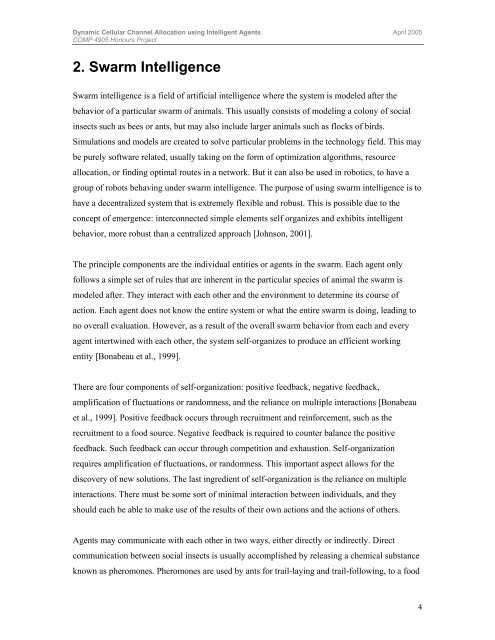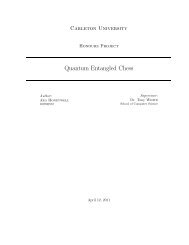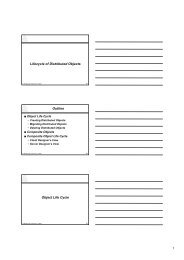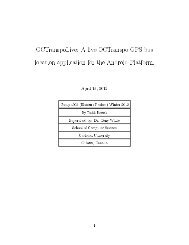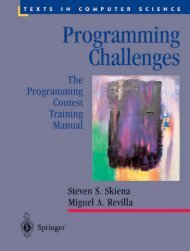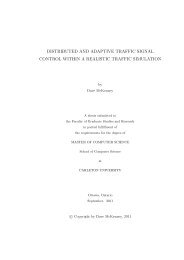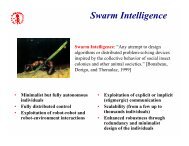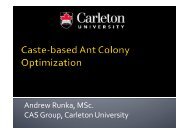Gayan Abeysundara - Complex Adaptive Systems Group
Gayan Abeysundara - Complex Adaptive Systems Group
Gayan Abeysundara - Complex Adaptive Systems Group
Create successful ePaper yourself
Turn your PDF publications into a flip-book with our unique Google optimized e-Paper software.
Dynamic Cellular Channel Allocation using Intelligent Agents April 2005COMP 4905 Honours Project2. Swarm IntelligenceSwarm intelligence is a field of artificial intelligence where the system is modeled after thebehavior of a particular swarm of animals. This usually consists of modeling a colony of socialinsects such as bees or ants, but may also include larger animals such as flocks of birds.Simulations and models are created to solve particular problems in the technology field. This maybe purely software related, usually taking on the form of optimization algorithms, resourceallocation, or finding optimal routes in a network. But it can also be used in robotics, to have agroup of robots behaving under swarm intelligence. The purpose of using swarm intelligence is tohave a decentralized system that is extremely flexible and robust. This is possible due to theconcept of emergence: interconnected simple elements self organizes and exhibits intelligentbehavior, more robust than a centralized approach [Johnson, 2001].The principle components are the individual entities or agents in the swarm. Each agent onlyfollows a simple set of rules that are inherent in the particular species of animal the swarm ismodeled after. They interact with each other and the environment to determine its course ofaction. Each agent does not know the entire system or what the entire swarm is doing, leading tono overall evaluation. However, as a result of the overall swarm behavior from each and everyagent intertwined with each other, the system self-organizes to produce an efficient workingentity [Bonabeau et al., 1999].There are four components of self-organization: positive feedback, negative feedback,amplification of fluctuations or randomness, and the reliance on multiple interactions [Bonabeauet al., 1999]. Positive feedback occurs through recruitment and reinforcement, such as therecruitment to a food source. Negative feedback is required to counter balance the positivefeedback. Such feedback can occur through competition and exhaustion. Self-organizationrequires amplification of fluctuations, or randomness. This important aspect allows for thediscovery of new solutions. The last ingredient of self-organization is the reliance on multipleinteractions. There must be some sort of minimal interaction between individuals, and theyshould each be able to make use of the results of their own actions and the actions of others.Agents may communicate with each other in two ways, either directly or indirectly. Directcommunication between social insects is usually accomplished by releasing a chemical substanceknown as pheromones. Pheromones are used by ants for trail-laying and trail-following, to a food4


